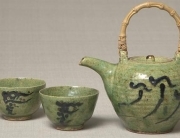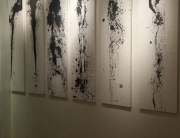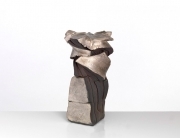Tamba in Hyogo has become a major event over the years. The pottery has also developed multiple names as well. Tachikui was the original place of origin for the style, so sometimes one might still see it referred to as tachikui yakimono. Those origins are quite interesting in their own right.
The origins stretch back to as early as the end of the Heian period. Once the Kamakura period began the style started to really heat up, and the years of 1180-1230 were a sort of halcyon period for tamba yaki. As was previously mentioned, the style comprises one of the ancient six kiln styles practiced in Japan.
Kondacho Tachikui in Hyogo Prefecture could not be a more perfect place for growing the yakimono art. Green hills gently roll down the east and west banks of the area, and cultivated fields are comfortably nestled between them. A stream called the Shitodani runs between the north and south, and the kiln itself is built on the sloping surface of a hill, which has given it a remarkably unusual appearance.
In fact, the kiln’s physical appearance has become quite famous as well. The kiln itself is inclined, and has attracted the name nobori gama, or inclined kiln, as a result of this state of affairs. Regardless, the kiln itself produces very stable ceramics to say the least.
Perhaps the heavy iron content in the soil has contributed to the particular color and type of glaze used in the general area. That would make a like of sense. Mineral content in the local soils very often contributes to what people do with the glazing. While artists these days could just as easily import glazes from all over Japan, they still continue to stick with what would have traditionally been used by tamba yaki artists since time immemorial.
Admittedly to some degree the kiln itself is now becoming an attraction for tourists, but it hasn’t given up even an iota of its respectability as such. Instead people want to visit it because of the fact that it has remained solid for all of these years. Ceramics are still crafted there in the same manner that they always have been, and that’s important to those who want to see the old wood kiln in operation today. Few places have such history preserved and allow artists to work with such a traditional method of crafting real ceramic goods.




